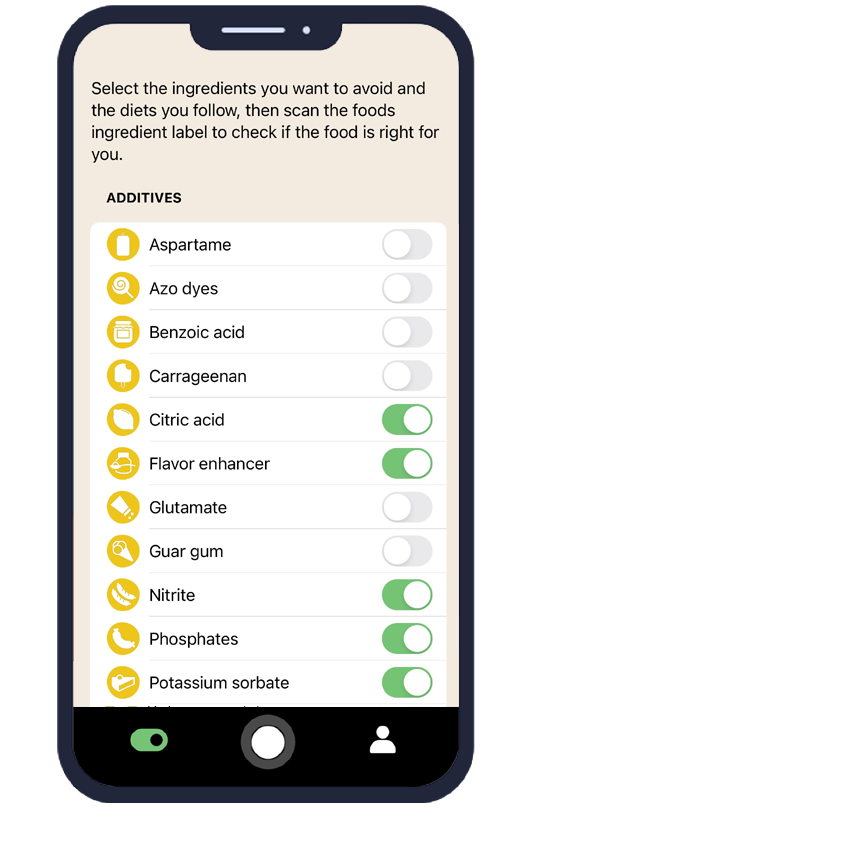Everything You Need to Know About Potassium Sorbate and How AI Eat This Can Help
Potassium sorbate is one of the most widely used food preservatives in the modern food industry, yet many consumers remain unaware of its presence in their daily meals. This synthetic preservative helps extend shelf life and prevent spoilage, but some individuals may need to avoid it due to dietary restrictions or sensitivities. Understanding what Potassium sorbate is and where it's found becomes crucial for making informed food choices.
For those managing specific dietary needs or food sensitivities, identifying Potassium sorbate in ingredient lists can be challenging and time-consuming. The AI Eat This app revolutionizes this process by instantly scanning ingredient lists and alerting users to the presence of Potassium sorbate and other food additives they wish to avoid.
What Is Potassium Sorbate and Where Is It Used?
Potassium sorbate, also known by its E-number E202, is a synthetic preservative derived from sorbic acid and potassium hydroxide. This white, crystalline powder effectively inhibits the growth of mold, yeast, and bacteria, making it invaluable for food manufacturers seeking to extend product shelf life. The preservative works by disrupting the cellular processes of microorganisms, preventing spoilage and maintaining food safety.
The food industry extensively uses this preservative because it remains stable across various pH levels and temperatures. Unlike some other food additives, Potassium sorbate doesn't significantly alter the taste, color, or texture of food products, making it an ideal choice for manufacturers.
Common Foods Containing Potassium Sorbate
You'll find Potassium sorbate in numerous everyday food products, often without realizing it. The preservative appears most frequently in processed and packaged foods where extended shelf life is essential.
- Baked goods including bread, cakes, and pastries
- Dairy products such as cheese, yogurt, and processed milk
- Beverages including soft drinks, fruit juices, and wine
- Condiments and sauces like ketchup, mayonnaise, and salad dressings
- Processed meats including deli meats and sausages
- Dried fruits and fruit-based products
- Cosmetics and personal care items
Is Potassium Sorbate Safe? What Does the Research Say?
Regulatory Approvals and Guidelines
Major health authorities worldwide have extensively studied Potassium sorbate safety and deemed it safe for consumption within established limits. The U.S. Food and Drug Administration (FDA) has classified it as "Generally Recognized as Safe" (GRAS) for use in food products. Similarly, the European Food Safety Authority (EFSA) has approved its use throughout the European Union.
The World Health Organization (WHO) has established an Acceptable Daily Intake (ADI) of 25 mg per kilogram of body weight. This means a 150-pound adult could safely consume up to 1,700 mg of Potassium sorbate daily without adverse effects. Most people consume far less than this amount through normal dietary intake.
Potential Risks for Specific Groups
While Potassium sorbate is generally safe for most people, certain individuals may experience sensitivity or intolerance. Some people report mild allergic reactions including skin irritation, digestive discomfort, or respiratory symptoms. These reactions are relatively rare but can occur in sensitive individuals.
People with existing potassium-related health conditions should consult healthcare providers before consuming products containing this additive. Additionally, individuals following strict organic or natural diets may choose to avoid synthetic preservatives like Potassium sorbate as part of their dietary restrictions.
How AI Eat This Helps You Avoid Potassium Sorbate
Managing dietary restrictions becomes significantly easier with the AI Eat This mobile application. This innovative tool uses advanced artificial intelligence to scan ingredient lists instantly, identifying Potassium sorbate and thousands of other food additives across multiple languages.
The app's camera-based scanning feature allows users to photograph ingredient labels and receive immediate feedback about product suitability. Users can create personalized profiles specifying which ingredients to avoid, including Potassium sorbate, and the app will alert them when scanning products containing these substances.
Beyond simple identification, AI Eat This provides educational information about each ingredient, helping users understand why they might want to avoid certain food additives. The app's database continuously updates to include new products and ingredients, ensuring users have access to the most current information available.
Who Should Consider Avoiding Potassium Sorbate?
Several groups of people may benefit from limiting or avoiding Potassium sorbate consumption. Individuals with diagnosed sensitivities or allergic reactions to this preservative should carefully monitor their food intake and read ingredient labels thoroughly.
People following clean eating lifestyles or organic diets often prefer to avoid synthetic preservatives, including Potassium sorbate. These individuals typically choose whole, unprocessed foods or products with natural preservation methods. Parents seeking to limit their children's exposure to artificial additives may also choose to avoid products containing this preservative.
Those managing specific health conditions that require careful monitoring of potassium intake should discuss Potassium sorbate consumption with their healthcare providers. While the preservative contains relatively small amounts of potassium, individuals on strict potassium-restricted diets may need to consider all sources.
Tips for Maintaining a Potassium Sorbate-Free Diet
Successfully avoiding Potassium sorbate requires strategic shopping and meal planning approaches. Focus on purchasing fresh, whole foods that naturally resist spoilage without artificial preservatives. Fresh fruits, vegetables, unprocessed meats, and dairy products typically don't contain this additive.
When shopping for packaged foods, always read ingredient labels carefully. Look for Potassium sorbate, E202, or sorbic acid on ingredient lists. Choose products labeled as "preservative-free," "natural," or "organic" when possible, as these are less likely to contain synthetic preservatives.
Consider preparing more meals at home using fresh ingredients, which gives you complete control over what goes into your food. Batch cooking and proper food storage techniques can help extend the life of homemade meals without relying on artificial preservatives.
Utilize technology like the AI Eat This app to streamline the ingredient-checking process. The app's instant scanning capability saves time and reduces the likelihood of accidentally consuming products containing Potassium sorbate or other unwanted additives.
Conclusion
Understanding Potassium sorbate and its widespread use in food products empowers consumers to make informed dietary choices. While this preservative is generally safe for most people, those with sensitivities, specific dietary restrictions, or personal preferences may choose to avoid it.
The AI Eat This app transforms the challenging task of identifying food additives into a simple, efficient process. By leveraging advanced technology to scan and analyze ingredient lists, the app supports users in maintaining their preferred dietary restrictions without compromising convenience or lifestyle.
Whether you're managing food sensitivities, following a clean eating approach, or simply want to be more aware of what you consume, having the right tools makes all the difference. Download AI Eat This for free testing today and take control of your dietary choices with confidence and ease.

70 filters
With over 70 filters, you can easily avoid certain ingredients and follow your dietary preference.

Paleo

Pescetarian

Ultra-processed food

Vegan







































































